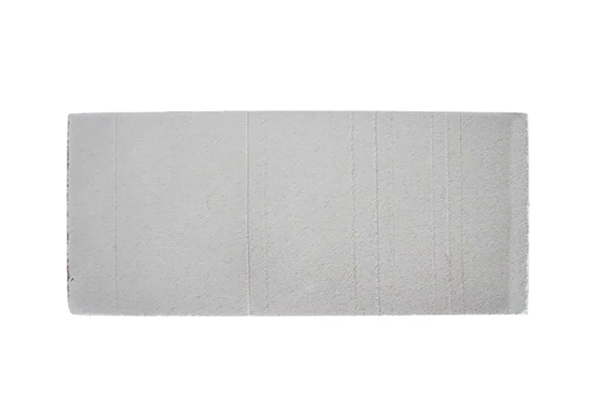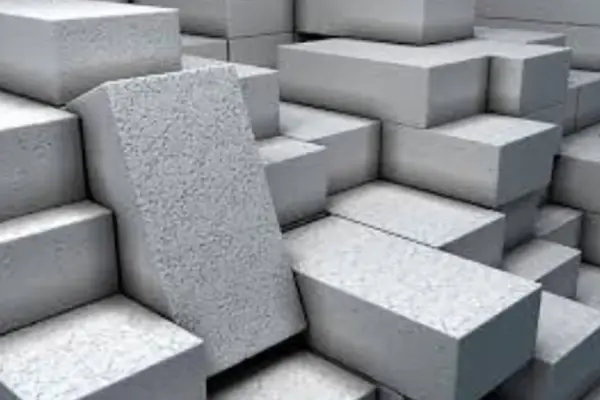In the rapidly evolving construction industry, the selection of appropriate building materials plays a crucial role in the strength, durability, and overall efficiency of a structure. Among the various options available, AAC (Autoclaved Aerated Concrete) blocks and solid concrete blocks are two popular choices. While both serve the purpose of building walls, they have distinct properties, applications, and advantages. Understanding the differences between AAC blocks and solid blocks is essential for making informed decisions in construction projects.
What are AAC Blocks?
AAC blocks are a type of lightweight, precast building material made from a mixture of cement, lime, sand, water, and a small amount of aluminum powder. This mixture undergoes a chemical reaction that forms tiny air bubbles within the material, giving AAC blocks their lightweight and porous structure. These blocks are then cured under high pressure and temperature in an autoclave, which enhances their strength and durability.

Key Properties of AAC Blocks:
- Lightweight: AAC blocks are much lighter than traditional solid blocks, reducing the overall dead load of a building. This characteristic makes them easier to handle and transport, which can lower construction costs and time.
- Thermal Insulation: Due to their porous nature, AAC blocks offer excellent thermal insulation. They help maintain a stable indoor temperature, reducing the need for additional insulation materials and lowering energy costs.
- Fire Resistance: AAC blocks are highly fire-resistant, withstanding temperatures of up to 1,200°C. This makes them an ideal choice for buildings where fire safety is a priority.
- Sound Insulation: The air pockets within AAC blocks also contribute to good sound insulation, making them suitable for residential and commercial buildings in noisy environments.
- Eco-Friendly: AAC blocks are made from non-toxic materials and produce less waste during production, making them an environmentally friendly building material.
What are Solid Blocks?
Solid blocks, commonly referred to as solid concrete blocks, are made from a mixture of cement, aggregate (usually sand or crushed stone), and water. These blocks are dense, heavy, and solid throughout, providing a robust and durable construction material. Solid blocks are widely used in load-bearing walls and other structural applications.

Key Properties of Solid Blocks:
- High Compressive Strength: Solid blocks have a high compressive strength, making them suitable for load-bearing walls and other structural elements that require substantial support.
- Durability: Solid blocks are known for their durability and ability to withstand harsh weather conditions, moisture, and wear over time. They are less likely to crack or deteriorate under pressure.
- Thermal Mass: The density of solid blocks provides good thermal mass, meaning they can absorb and retain heat. This can be beneficial in climates with significant temperature fluctuations, as it helps regulate indoor temperatures.
- Versatility: Solid blocks can be used in a variety of construction applications, including foundations, walls, retaining structures, and more. Their versatility makes them a popular choice in both residential and commercial construction.
- Cost-Effective: In many regions, solid blocks are more readily available and less expensive than AAC blocks, making them a cost-effective option for many builders.
Comparing AAC Blocks and Solid Blocks
When comparing AAC blocks and solid blocks, several key factors come into play:
- Weight: AAC blocks are much lighter than solid blocks. This makes them easier to handle, reduces transportation costs, and lowers the overall weight of the structure. In contrast, solid blocks are heavier and require more effort and resources to transport and install.
- Strength: Solid blocks generally have higher compressive strength than AAC blocks, making them more suitable for load-bearing applications. However, AAC blocks have sufficient strength for many types of construction, especially in non-load-bearing walls.
- Insulation: AAC blocks provide superior thermal and sound insulation compared to solid blocks. This makes them a better choice for energy-efficient buildings and structures in noisy environments.
- Fire Resistance: Both AAC blocks and solid blocks offer good fire resistance, but AAC blocks have an edge due to their ability to withstand higher temperatures.
- Environmental Impact: AAC blocks are considered more eco-friendly due to their use of non-toxic materials and lower energy consumption during production. Solid blocks, while durable, have a larger carbon footprint due to the cement content and energy-intensive manufacturing process.
- Cost: Solid blocks are often less expensive than AAC blocks, particularly in regions where cement and aggregate are abundant. However, the long-term energy savings and reduced construction time with AAC blocks may offset the initial cost difference.
Conclusion
The choice between AAC blocks and solid blocks ultimately depends on the specific needs and priorities of a construction project. AAC blocks are an excellent choice for projects that require lightweight, energy-efficient materials with good insulation properties. They are particularly well-suited for non-load-bearing walls and buildings in areas with seismic activity. On the other hand, solid blocks offer superior strength, durability, and versatility, making them ideal for load-bearing structures and applications where cost is a primary concern.
By understanding the differences between these two building materials, builders and architects can make informed decisions that align with the goals and requirements of their projects.
Post time: 9月-11-2024




